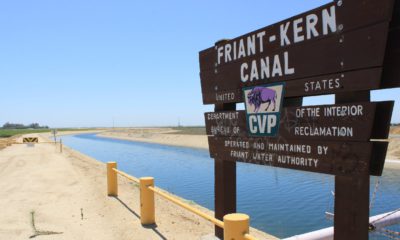Published
6 years agoon
By
gvwire
After many challenging years, California dairies have reason for optimism thanks to a bipartisan effort by Rep. David Valadao and other House members from the Valley.
On Thursday, the California Federal Milk Marketing Order Act took effect.
The marketing order is intended to make dairies in the Valley and throughout California more competitive with milk producers nationwide.

“After years of work, our efforts have come to fruition. … California dairy farms can compete on the national level, expand their operations, and create greatly needed jobs right here in the Central Valley.” — Rep. David Valadao
Valadao, whose family is in the dairy business, introduced the legislation in 2013, and it became part of the 2014 Farm Bill. That enabled California dairy producers to petition the U.S. Department of Agriculture to enter into a new pricing structure.
“In 2013, I first introduced legislation to allow California dairy farmers to have a say regarding their pricing system,” Valadao (R-Hanford) said in a statement. “After years of work, our efforts have come to fruition, and today California milk pricing transitions to the Federal Milk Marketing Order.
“In doing so, California dairy farms can compete on the national level, expand their operations, and create greatly needed jobs right here in the Central Valley.”
Ten co-sponsors from California backed the legislation. Among them: Jim Costa (D-Fresno), Devin Nunes (R-Tulare), and Kevin McCarthy (R-Bakersfield).
“I look forward to seeing the positive effects this will have for our dairy farmers and our entire Valley community,” Costa said.

“I look forward to seeing the positive effects this will have for our dairy farmers and our entire Valley community.” — Rep. Jim Costa
According to the California Department of Food and Agriculture, the state had 1,563 dairies in 2012. In 2016, there were 1,392 dairies — an 11 percent decline.
Rising production costs coupled with falling milk prices have triggered a rise in bankruptcies, mostly of smaller dairies. This has resulted in fewer, but bigger dairies.
Before the federal milk marketing order, the California Department of Food and Agriculture ran the milk pricing program. However, dairy farmers in California compete with producers across the nation who operate under the federal program.
According to Geoff Vanden Heuvel, director of regulatory and economic affairs for the Milk Producers Council, this is a primary reason California producers voted to adopt the federal marketing order.
“By opting for the federal milk marketing order, we chose to level the playing field with our competition,” Vanden Heuvel said in a statement provided by Costa’s office. “This should hopefully allow our dairy farmers to get paid more for their milk.”

Source: California Department of Food and Agriculture (GV Wire Graphic/Alexis DeSha)


Vice President Stops at Lemoore Navy Base, Says Trump Reversed ‘Hollowed Out’ Military


Costa, Harder Join With Pelosi, Want Trump Impeached


McCarthy, Valadao on Washington D.C. Protests: It Is ‘Un-American,’ Has To Stop


Congress Kicks in $206 Million to Fix Leaky Friant-Kern Canal


Tuesday’s Creek Fire Updates: 16% Containment, 555 Structures Destroyed, Huntington ‘Fire Tornado’ 1,400 Degrees


Hit Hard by COVID-19, Where Do We Go From Here?




